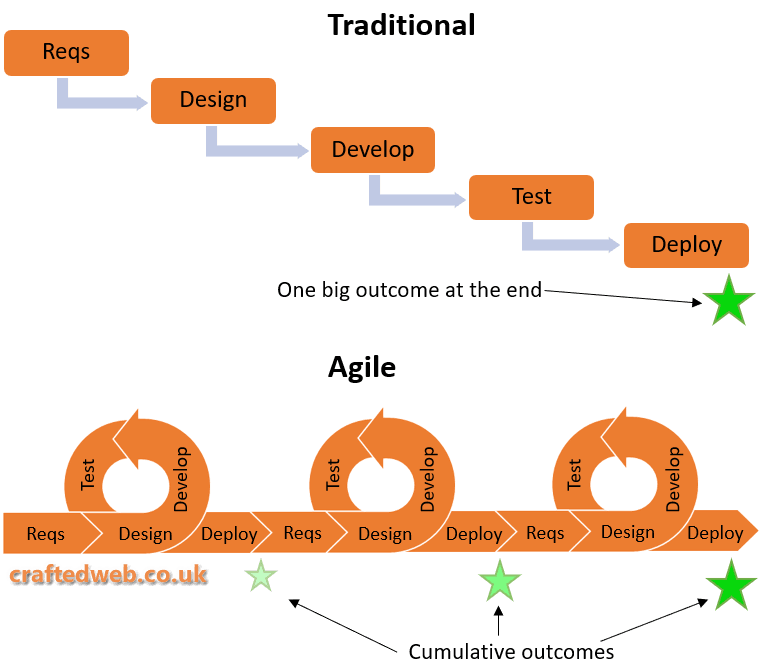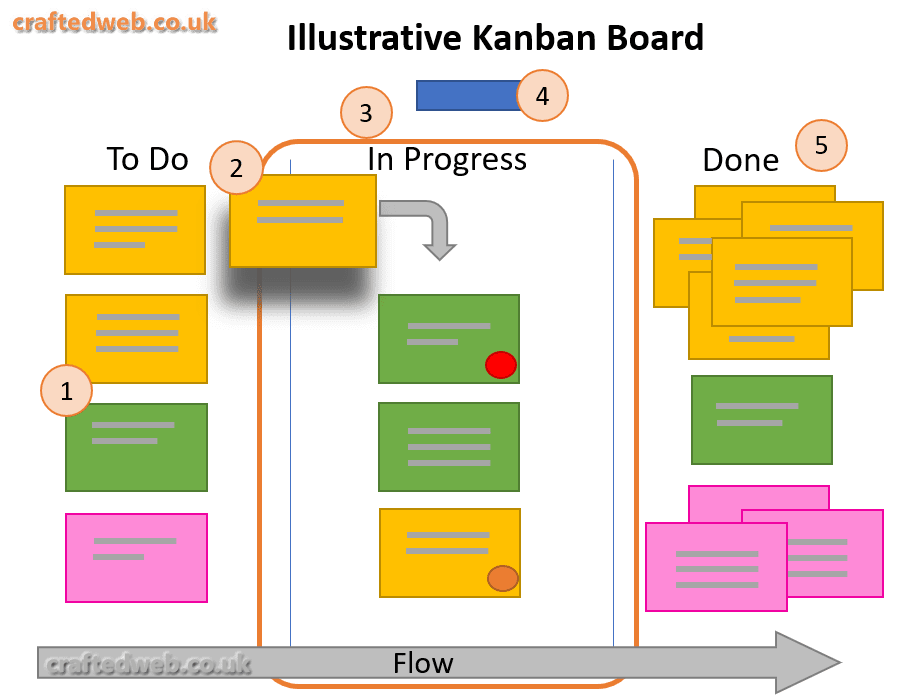Agile vs Traditional
Agile is all about a set of values and principles, and being able to adapt and adjust. Waterfall projects might become fewer in number but how Agile we can be depends on how prepared the organisation is to change.
With traditional development, it can take a long time before something is delivered, but today we need to deliver faster and faster to gain or maintain a competitive edge.
Other ConsiderationsTo help us decide which approach we should use, consider the following:
- Requirements are constantly changing (Agile)
- People such as developers and product owners are dedicated to the project (Agile).
- People are distributed or located off-shore (Waterfall).
- Continuous and frequent feedback is avaiable from the customer (Agile).
- There are fixed costs, or any other restrictions (Waterfall).
Just because a characteristic tends towards Waterfall, think what might need to change to allow a more agile approach to be used. For physical location, video conferencing and teams that are dedicated to the task might mean that off-shore projects don't have to be Waterfall.
In order to improve speed to market, maybe a transforming organisation will break a big project down into mini-projects - or mini-waterfalls. It's not Agile, but at least faster delivery of working software is the outcome.
So to conclude, choose the best method for the project and organisation, but no matter which approach is taken, in the spirit of agile, do, learn, change. Become an agile organisation in increments if necessary.


